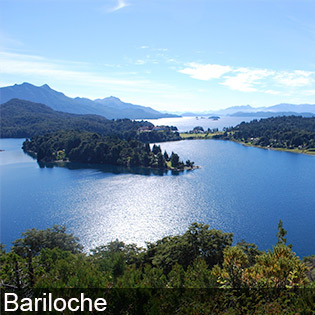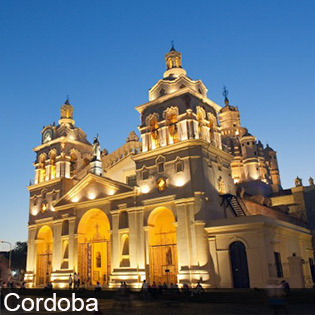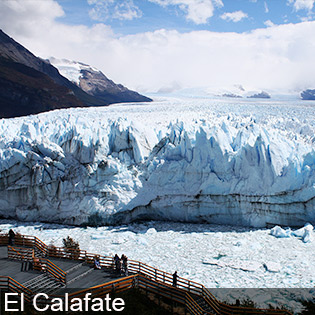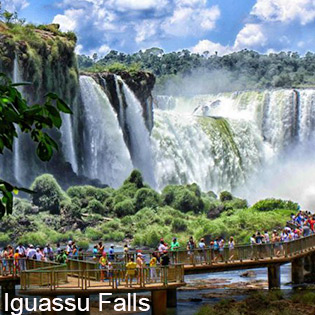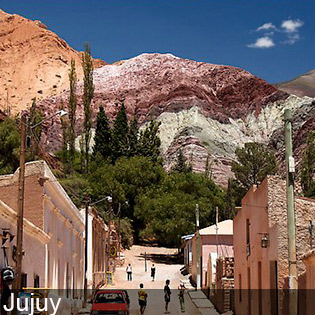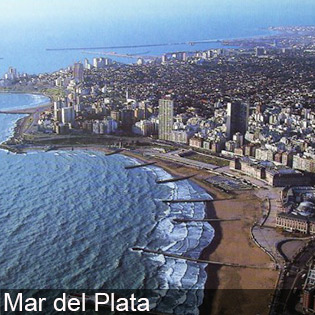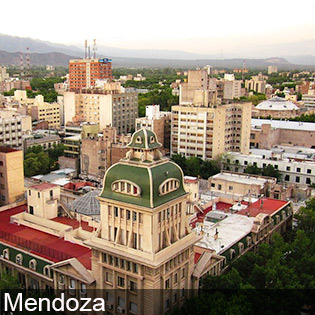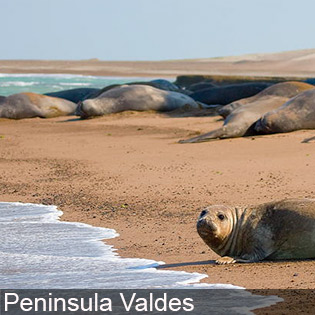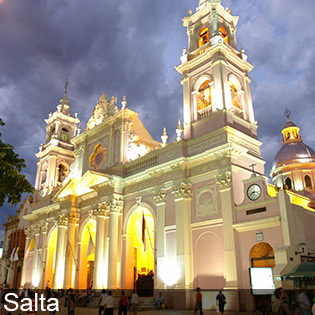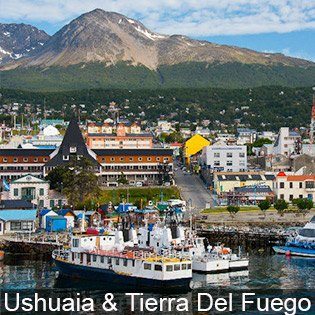ARGENTINA: Region by Region
Welcome to our Region by Region section. This section is intended to provide more details of each county’s regions, highlighting the region’s attributes and points of interest, including what to see, best time to see it; suggested length of stay, and more. Moreover, this section provides the independent traveler the opportunity to consider what cities and regions interest them most. While our Pre-designed tour menu provides a wide range of suggested popular tour programs, the Region by Region sections allows you to custom-design the tour of your choice.
Buenos Aires
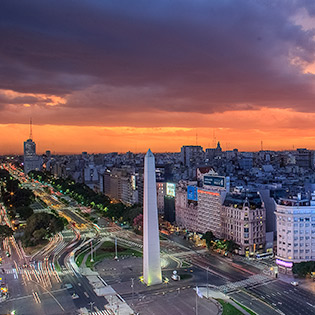
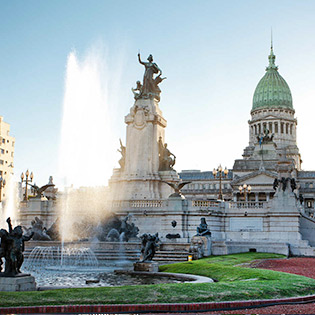
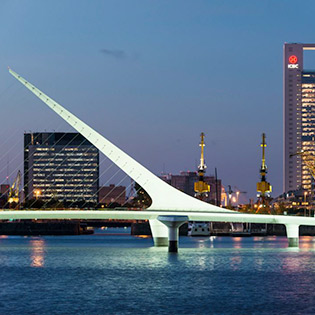
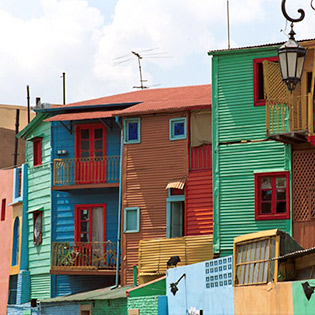
Overview
Argentina’s capital, popularly known as the “Paris of South America,” is one of the world’s most beautiful and cosmopolitan cities. Built in the 19th century, an era of plenty for Argentina’s wealthy gaucho land barons, Buenos Aires blends old world charm with modern convenience. Today the city of three million is a mosaic as varied and diverse as its culture. Small, highly individualized neighborhoods each proudly display distinct characteristics and colors. With a distinctive European flavor, Buenos Aires boasts numerous monuments and tourist attractions, and is also famous for shopping, theater, and its famed tango-inspired nightlife.
Recommended Stay
Three to five nights
When to go
Best to avoid the winter season (June-August) since it is often too cold for walking around the city.
Highlights
- City tours: Enjoy a rolling tour of Buenos Aires most traditional neighborhoods.
- Tango Shows: Spectacular Tango shows can be enjoyed every evening.
- Boat Tours: Cruise the tranquil waters of the Tigre Delta to admire many of Buenos Aires most stately mansions.
- Estancia Excursions: Leave the city and discover the land of the Gauchos (the Argentinean cowboys) on a visit to a traditional ranch.
- Shopping
Bariloche
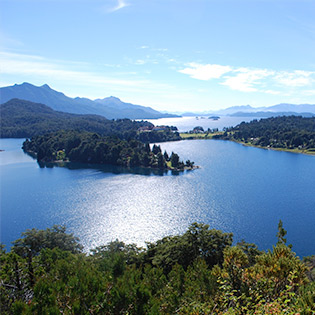
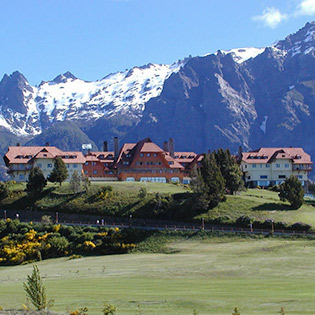

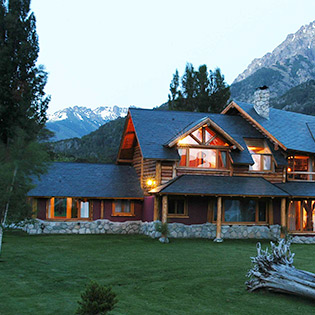
Overview
Located in Argentina's Río Negro province, Bariloche is a city surrounded by thousand-year-old forests, mountains covered in snow and crystal clear lakes. It's quintessentially Patagonian. A city that is home to excellence and surrounded by some of the country's most beautiful natural spots. Situated on a glacial moraine, at the very edge of Lake Nahuel Huapi, Bariloche is the heart and soul of the famous lake region, on the border between Argentina and Chile. The city features a remarkable German-style architecture amid a background of extreme beauty enhanced by snow-capped mountains, millenary forests, and azure and emerald-water lakes. It is also the departure and arrival point for the famous lake crossing to Chile’s Lake District (or return from Chile), and gateway to famous ski resorts during the winter season (Argentina and Chile seasons are opposite North America, so best time for skiing is July, August, and up to the 2nd week in September).
Recommended Stay
Two nights
When to go
Best time is December-April, when days are longer. Although Patagonia’s weather is unpredictable, summer is characterized by sunny days and cool nights with temperatures ranging from 60F to 80F. Winter (June-September) is the best time for ski aficionados. Temperatures vary from 14F to 35F.
Highlights
Cordoba
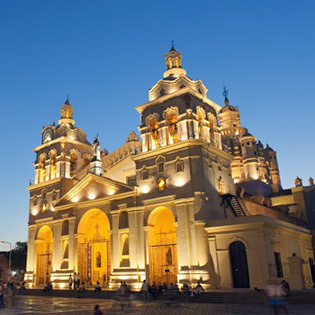
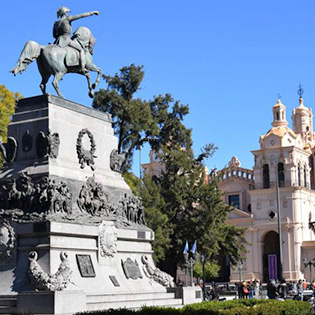
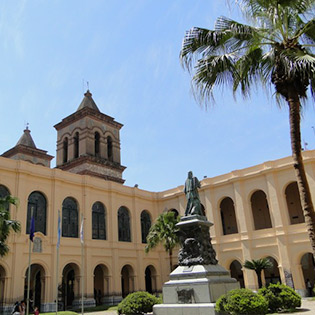
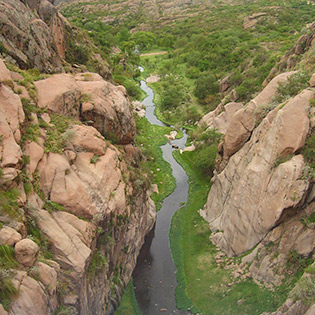
Overview
Córdoba, capital of the Argentine province of the same name, is known for its Spanish colonial architecture. Its home to the Manzana Jesuítica (Jesuit Block), a 17th-century complex with active cloisters, churches and the original campus of the Universidad Nacional de Córdoba, one of South America’s oldest universities. The city’s focal point is Plaza San Martín and its neo-baroque Cathedral of Córdoba. While it sounds like an old guidebook cliché, Córdoba truly is a fascinating mix of old and new. Where else will you find DJs spinning electro-tango in crowded student bars next to 17th-century Jesuit ruins? And despite being a whopping 715km away from Buenos Aires, Córdoba is anything but a provincial backwater – in 2006 the city was awarded the hefty designation of Cultural Capital of the Americas, and the title fit like a glove. Cordoba is gaining a reputation for its big city vibe in a small city package. This includes a plethora of delicious food and drink options with some amazing dining opportunities, including Cordoba’s café culture. Four excellent municipal galleries – dedicated to emerging, contemporary, classical and fine art respectively – are within easy walking distance of each other and the city center.
Recommended Stay
Three to five nights
When to go
Cordoba is a year-round destinations. Cordoba has some humid months, and slightly dry months in the opposite season. Summer is November to March with average temperature of 27°C/80°F; Winter is May to August with average temperature 19°C/66°F. The least humid month is August (36.7% relative humidity), and the most humid month is February (66.7%). Wind in Cordoba is usually moderate. The windiest month is September, followed by November and October.
Highlights
- Paseo del Buen Pastor: Cultural institution housing art and photo galleries, eateries and green spaces with outdoor recitals.
- Sarmiento Park: it’s a large park with paths and a lake. Spacious, landscaped park with picnic areas, walking paths & an artificial lagoon with boat rentals.
- Plaza San Martin: Bustling historical square dating to the 16th century, with tall trees and a large bronze equestrian monument.
- Cathedral of Córdoba, Argentina: Elaborate 18th-century cathedral featuring monumental baroque and neoclassical architecture & an ornate interior.
- Evita Fine Arts Museum: Fine art museum with exhibits of Argentine & Spanish paintings, plus a sculpture garden and library.
- Capuchin Church: Church and gothic revival architecture
- El Papagayo: For a special dining experience, book a table inside this sleek two-floor restaurant, set in a narrow but light-flooded passageway. Chef Javier Rodriguez conjures up a gastronomic feast showcasing small plates that combine typical Argentine flavors with a Mediterranean touch, all prepared in wood-fired ovens or on a charcoal grill.
- Bruncheria: Down in the hipster sector of Güemes, the Brunchería offers a great mix of fresh decor, yummy food and cool music
- Down in the hipster sector of Güemes, the Brunchería offers a great mix of fresh decor, yummy food and cool music. It's a good spot for that second breakfast (in case the typical morning fare of coffee and croissant
- Jesuit Block and Estancias of Córdoba: History and architecture. The Jesuit Block and Estancias of Córdoba are a former Jesuit reduction built by missionaries in the province of Córdoba, Argentina, named a World
El Calafate
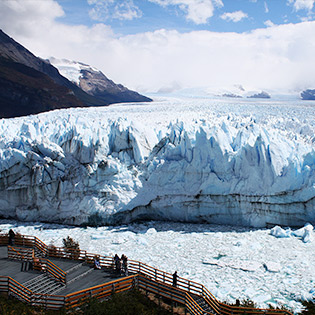
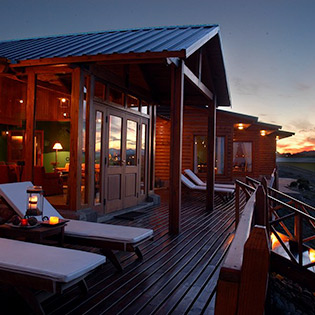
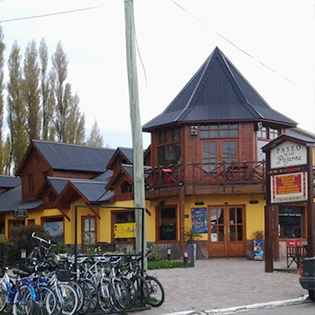
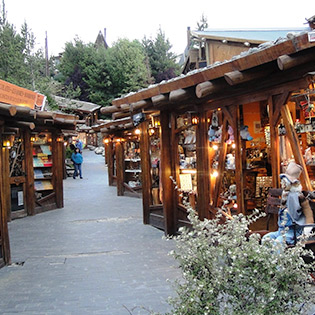
Overview
A small frontier village, El Calafate is situated along the southern border of Lake Argentino along the southwest part of the Santa Cruz Province in the heart of the famed Patagonia Region. Characterized by vast, open pampas; the colossal Northern and Southern Ice Fields and hundreds of glaciers; the jagged peaks of the Andes as they reach their terminus. This is home to Argentina’s coastal wildlife sanctuaries, a region of extreme natural beauty, famed for Perito Moreno Glacier, one of the world's few glaciers that is still growing. Today, the glacier has a three mile frontage and a height of 180 ft. Other special sights include Upsala Glacier at the north end of the lake, Glaciares National Park, and the spectacular Cerro Fitz Roy Mountain. The region boasts a variety of outdoor activities include hiking, trekking, mountain biking, and fishing.
Recommended Stay
Two to three nights
When to go
Patagonia is a land of rough weather conditions, where drastic changes may occur in a matter of hours. Remember that we are in opposite seasons so best time to visit the area is October-April, when temperatures are warmer and days longer. June-September (winter time) is excellent for winter sports. Average temperature range from 30F (winter time) to 72F (summer time) and can reach a maximum of 85F; winds are moderate, but there can reach gusts of over 60 miles per hour.
Highlights
Iguassu Falls
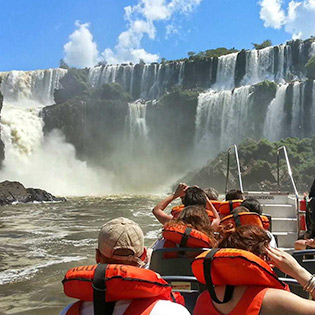
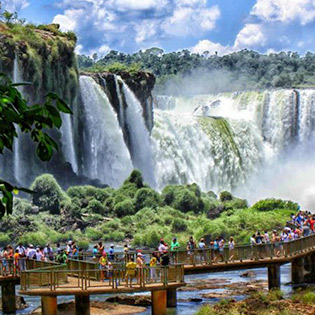
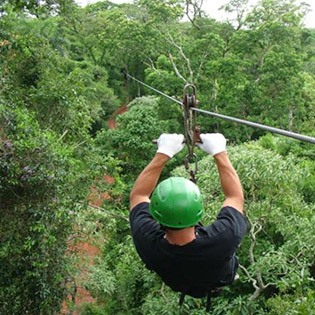
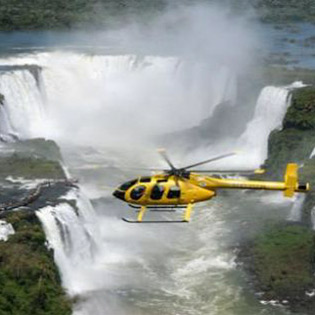
Overview
Situated in the north easternmost corner of Argentina in the province of Misiones and spilling across the border to Brazil is the spectacular Iguassu Falls (or spelled Iguazú in local Spanish). Iguassu Falls is where Argentina and Brazil share borders and is one of the most spectacular waterfalls in the world, spanning 2-miles with 275 separate waterfalls, wider than Victoria, higher than Niagara and more magnificent than both. The surrounding subtropical rainforest has over 2,000 species of vascular plants and is home to the typical wildlife of the region: tapirs, giant anteaters, howler monkeys, ocelots, jaguars and Caymans. In 1986 UNESCO designated the area a Natural Heritage of Humanity site and in 2011 it was chosen as one of the new natural Seven Wonders of the World. Popular tours include the Great Adventure (a thrilling boat ride to the foot of the falls), and excursions to gigantic Itaipu Dam on the nearby border of Brazil and Paraguay.
Recommended Stay
Two to three nights
When to go
Best time to see the falls at full strength is during the rainy season (November-February) although that may mean cold, dreary days. Dry season (April-July) is characterized by warm and sunny days although water levels will be at their lowest. If you want a compromise, choose March, August, September and October.
Highlights
- The Devil’s Gorge: The world’s mightiest waterfall (Argentinean side).
- The “Walkways”: Enjoy a full, panoramic view of the 275 plus falls (Brazilian side) and meet the coatimundis, the park’s most popular inhabitants.
- The Great Adventure: Ride a safari boat to the edge of the falls.
- Helicopter Tours: A bird’s eye of the natural wonder. Highly recommended.
- Itaipu Dam: Tour the world’s largest hydroelectric complex.
Jujuy

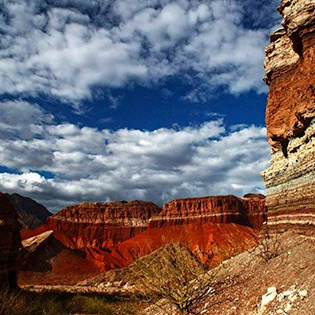
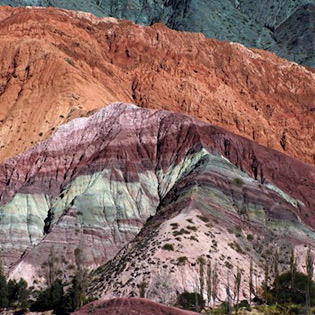
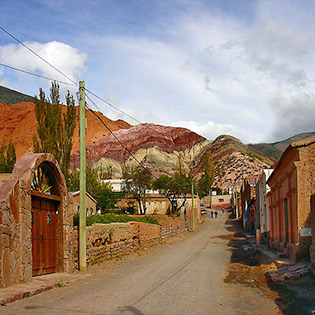
Overview
Jujuy, a province in Argentina’s remote northwest, is defined by the dramatic rock formations and hills of the Quebrada de Humahuaca. This valley and its indigenous Quechuan villages lie north of the provincial capital and regional gateway, San Salvador de Jujuy. In the valley’s south, the iconic, multicolored Cerro de los Siete Colores’ rocky slopes tower over the Spanish colonial village of Purmamarca. Jujuy (pronounced hoo-hooey) has a livable feel, enticing restaurants and is the most culturally indigenous of any of Argentina’s cities. However, it is often bypassed by travelers, as, among the trinity of northwestern cities, it lacks Salta's colonial sophistication and Tucumán's urban vibe. The city was founded in 1593, after two previous incarnations were razed by angry indigenous groups who hadn’t given planning permission. The province bore the brunt of conflict during the independence wars, with Spain launching repeated invasions down the Quebrada de Humahuaca from Bolivia. Today the city and its politics still simmer with indigenous solidarity, as their communities remain marginalized. You may notice good roads and reliable government services available elsewhere evaporate in the indigenous north.
Recommended Stay
Two to three nights
When to go
A very pleasant sub-tropical climate exists mainly because of the altitude. Summers bring warm days and pleasant nice nights. There is a huge variation between the temperatures of the day and the night.
Highlights
- Purmamarca: Day or night tour to explore provincial capital San Salvador de Jujuy and landmarks such as the archeology museum – it holds a fascinating skeleton of a shaman who was buried with his ‘medical’ kit – and Government House, home to Argentina’s original flag as delivered by General Belgrano to Jujuy town hall back in 1812 after his triumph in the Battle of Salta.
- Tilcara: Travel north to Tilcara (2,461 meters above sea level), a larger town in the Quebrada with more cultural offerings than Purmamarca. One notable landmark on the southern outskirts is Pucará de Tilcara, a pre-Inca settlement inhabited by the Omaguaca tribe, and one of the most well-preserved archeological sites in the region. Hold on to your entrance ticket because it gets you into the Museo Arqueológico located on Tilcara’s Plaza Prado, home to mummies and Inca artifacts, for free.
- Humahuaca: The carnival capital of northwestern Argentina, it’s a party day and night come Lent in Humahuaca (2,936 meters above sea level). Masked devils jostle for dancing space with other revelers, and the dusty streets come alive with music, all fueled by chicha. The rest of the year, however, Humahuaca – the largest town in the Quebrada which nestles north of the Tropic of Capricorn – is a number-one stop-off for travelers, who use it as a base to access the Puna or Bolivia.
Mar del Plata
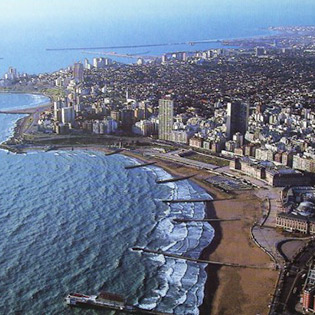
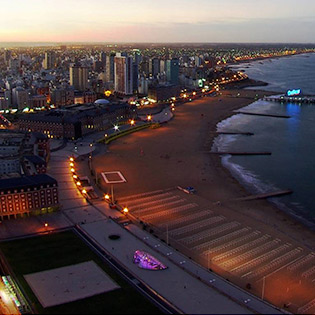
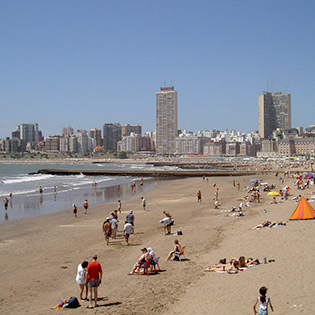
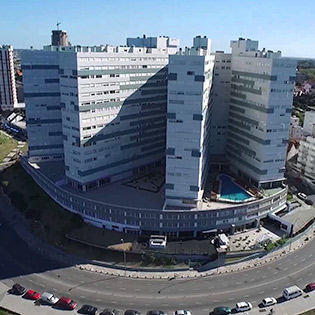
Overview
Mar del Plata has a sophisticated tourist infrastructure with numerous hotels, restaurants, casinos, theatres and other tourist attractions. 'Mardel' is the classic Argentine beach destination for the Argentine population. Should you visit on a summer weekend (summer is opposite season to USA), the string of beaches that fringe the shoreline are shoulder-to-shoulder sunburned bodies: not exactly a relaxing getaway. Out-of-season visitors, however, will find that Mardel, once a glamorous seaside resort in the 1920s and 1930s, and again during a midcentury development boom, has become a large and interesting city with stunning architecture and plenty of cultural attractions that have nothing to do with the beach. Many of them are connected by attractive pedestrian thoroughfares that link to an oceanfront promenade that winds along the city's gorgeous arced coastline. Mar del Plata is also well-known for the Central Casino, one of a pair of twin buildings designed by architect Alejandro Bustillo. The casino and neighboring Grand Provinicial Hotel (inaugurated in 1950) remain architectural landmarks of the city of Mar del Plata as well as of Argentina.
Recommended Stay
Three to five nights
When to go
Mar del Plata is a year-round destination. The warmest months are December, January, and February. The warmest time of year is generally late January where highs are regularly around 85.1°F (29.5°C) with temperatures rarely dropping below 60.8°F (16°C) at night.
Highlights
- City Tour: Visiting the main points of interest: Plaza del Milenium, fountain of dancing waters, Plaza Colón, Torre de Agua, Paseo Güemes, Plaza del Agua, Los Troncos, Tissue Factory, Lourdes Grotto, Port, Fisherman's Bench.
- Torre Tanque (Tower of Mar del Plata): interesting medieval-style water-storage tower, atop Stella Maris hill, was finished in 1943 and is still functioning.
- Mar del Plata's Aquarium: Next to one of the emblematic icons of Mar del Plata, the Punta Mogotes Lighthouse, lies "Aquarium Mar del Plata", a small but illustrative show of the vastness of the sea.
- Juan Carlos Castagnino Municipal Art Museum: The picturesque building of the museum Juan Carlos Castagnino guards more than 450 plastic works by artists from Mar del Plata and other provinces.
- Visit the restaurants at the port: Lovers of fish and seafood cuisine will find a wide range of choices, from a typical paella to an assortment of canned sea products.
- Day at the Beach: there a host of beaches in the Mar del Plata region for sun and bathing.
- Central Casino: This is one of the largest casinos in the world.
Mendoza
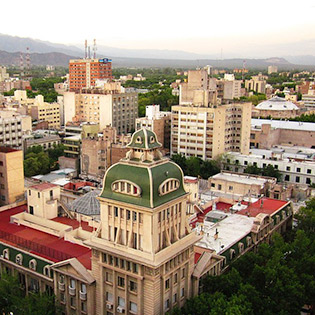
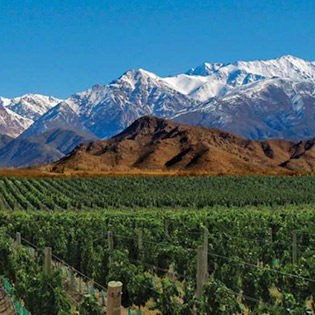
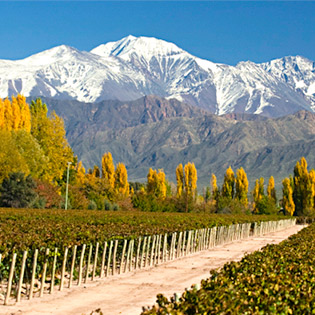
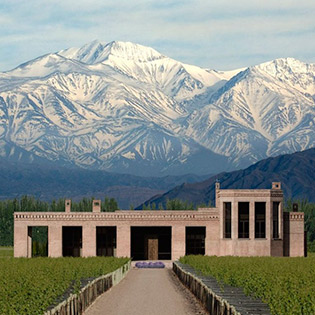
Overview
At the foot of the highest Andes, Mendoza is a modern city with a storied past that charms visitors with its tree-lined avenues, handsome villas, adobe houses and, of course, its famous wineries. Though rainfall is slight, irrigation has turned the countryside into a green oasis of vineyards and fruit plantations. Wine making season is March-April, and there are numerous wine cellars (bodegas) where wine tasting is a popular activity. Mendoza is also the departing point for exciting rafting excursions and expeditions to Mount Aconcagua, (22,835 ft.) highest in the Americas.
Recommended Stay
Two to three nights
When to go
October-March is the best season to visit with hot days reaching the lower 90s that cool off to a comfortable 70F at night. During winter, temperatures range from 30F to 55F.
Highlights
- Wine tours: Visit small, independent wineries to learn about their history, production, and interact with owners.
- Wine Harvest Festival: One of Argentina’s largest celebrations, held annually the first Saturday in March.
- Climbing/Mountaineering: Mount Aconcagua, just an hour away, is one of the most popular treks in South America.
- Whitewater rafting excursions on the Mendoza River.
Peninsula Valdes
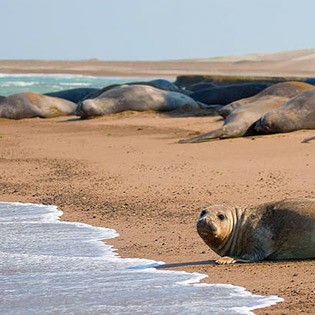

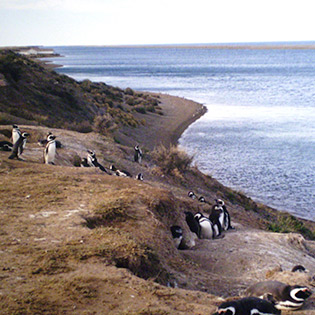
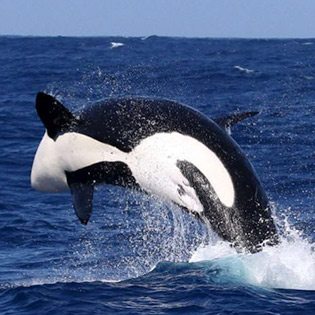
Overview
One of the wildlife highlights of Argentina, the Peninsula Valdes offers the opportunity to see some of nature’s largest marine animals in their natural environment. Probably the largest draw cards are the Southern Right Whales that come to take shelter in the natural bays on either side of the peninsula between June and November. There is, however, plenty more to see with a whole host of other animals such as elephant seals, Magellenic penguins and many more regularly seen. Undoubtedly one of the highlights of any trip to Argentina, the Peninsula Valdes and its neighboring town, Puerto Madryn, offer some of the best sea life and wildlife of anywhere in the world. The Peninsula Valdes is a fairly unique formation along the Atlantic coast of Argentina that has formed two natural inlets that provide shelter for wildlife of all kinds. In particular, the Southern Right Whales use the natural harbours as a resting and breeding ground, away from the raging Atlantic, as they migrate south to their Antarctic feeding grounds.
Recommended Stay
Two to four nights
When to go
September, October and November are the best months to visit this area of Patagonia and see both whales and penguins.
Highlights
- Orcas: The only place in the world where orcas beach themselves on the shore in order to hunt sea lion pups.
- Southern right whales: These gentle giants gather just metres from the shore, and can be seen from your hotel balcony, on the beaches and cliffs, and by boat, plane, kayak, or even submarine!
- Diverse wildlife: Walk among huge colonies of southern elephant seals and Magellanic penguins (some of the biggest colonies in South America), scuba dive, kayak and snorkel with sea lions, and spot weird and wonderful land mammals and birds, including flamingos, burrowing owls, maras, rheas and guanacos.
- Scenery: Enjoy the vastness and tranquility of the steppe, flanked with dramatic sandstone cliffs and crystal clear blue waters.
Salta
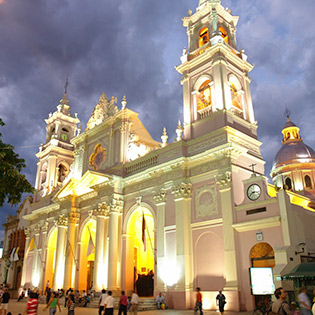
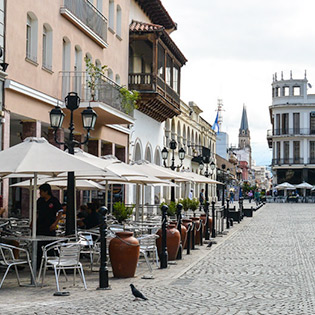
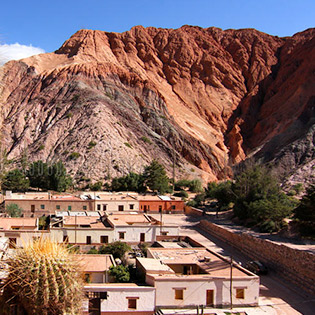
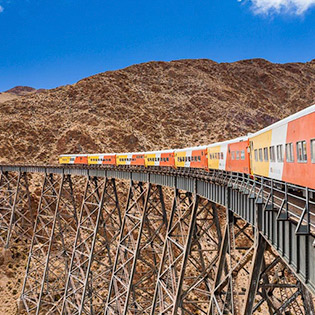
Overview
Salta is a provincial capital in mountainous northwestern Argentina, a region of rich Indian heritage. Beautiful scenery includes deep canyons, striking desert landscapes of sand and cactus, and unique rock formations. Founded in 1582, it’s known for its Spanish colonial architecture and Andean heritage. The city centers on Plaza 9 de Julio, an elegant, cafe-lined square bordered by the neoclassical Salta Cathedral and El Cabildo, an 18th-century town hall turned historical museum. Museo de Arqueología de Alta Montaña (MAAM) nearby houses Incan artifacts. Daily visitor excursions are popular to nearby Indian villages, colonial towns, natural monuments and local wineries. Salta provides for a perfect climate for producing wine. The surrounding mountains help produce a micro-climate which encourages vineyards to flourish, due to a combination of high altitude, irrigation from melted mountain snow and healthy soil. Salta is an up-and-coming wine region that is beginning to rival the famous Mendoza region of Argentina. And then there’s the Train to the Clouds, Argentina’s most famous rail trip, heads from Salta down the Lerma Valley then ascends multicolored Quebrada del Toro, continuing past the Tastil ruins and San Antonio de los Cobres, before reaching a stunning viaduct spanning a desert canyon at La Polvorilla (altitude 4220m).
Recommended Stay
Three to five nights
When to go
Average temperatures in Salta vary somewhat. Considering humidity, temperatures feel nice most of the year, excluding some cold weeks in the winter, with a low chance of precipitation most of the year. If you’re looking for the very warmest time to visit Salta, the hottest months are December, January, and then November. See average monthly temperatures below. The warmest time of year is generally late December where highs are regularly around 87.2°F (30.7°C) with temperatures rarely dropping below 62.1°F (16.7°C) at night.
Highlights
- National Parks: Excursions to nearby national parks featuring spectacular natural formations, also archeological sites and prehistoric indigenous villages.
- Wine tours: The region is becoming one of Argentina’s emergent wine producers.
- Train to the Clouds: A fascinating train ride on one of the world’s highest railways.
- Wilderness Trekking.
Ushuaia & Tierra Del Fuego National Park
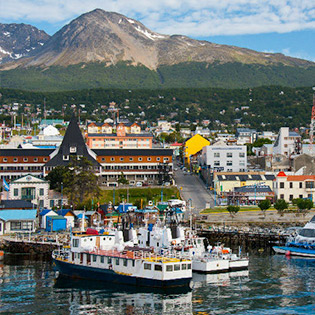
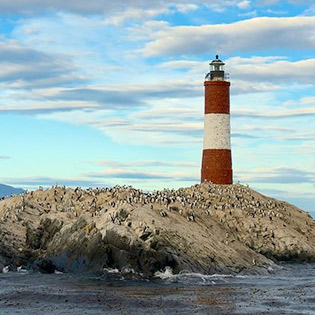
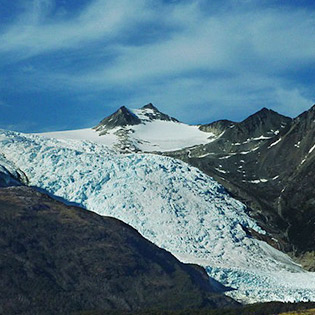
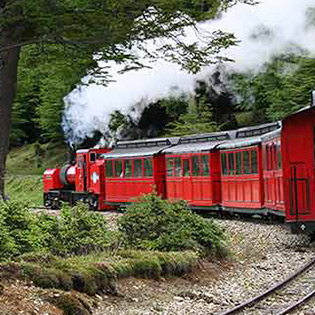
Overview
Ushuaia claims to be the world’s southern-most city, albeit a small one. It is surrounded by the wilderness and lakes of Tierra del Fuego, a perfect location for activities and watching wildlife. Ushuaia lies in a dramatic position overlooking the Beagle Channel. It is a port city, the capital of Tierra del Fuego, Antarctica and the South Atlantic Islands. The city is the departure point for most Antarctic and Atlantic cruises, and trips to nearby Tierra del Fuego National Park, Lakes Escondido and Fagnano, the Martial Glacier, Beagle Channel cruises, the Penguin Rookery and Estancia Harberton. In the summer months it is also the start (or finish) of voyages through the Strait of Magellan with a stop at Cape Horn. Ushuaia has an interesting history, and some buildings date from the days of the pioneers and penal colony, including the fascinating prison museum.
Situated south of the Magellan Strait, Tierra del Fuego is the archipelago’s largest island, separated by water from Patagonia. This island is divided by the Andes Mountains into two regions: the northern plains and the mountainous south with its stunning scenery of deep fjords, snow-capped peaks, forests and glacial lakes.
Recommended Stay
Two nights
When to go
Patagonia is a land of rough weather conditions, where drastic changes may occur in a matter of hours. Best time to visit the area is October-March, when temperatures are warmer and days longer. June-September is excellent for winter sports.
Highlights
- Ushuaia City Tour: Local history is rich offering diverse contrasts. It’s as though the extinct Yamana, original inhabitants, are still present in some discernible way. Many of the pioneers who lived with them are still here. In this sense, it's worth touring the traditional End of the World Museum.
- Tierra del Fuego National Park: One of Argentina’s most popular for bird watching, hiking and to view environmental protection measures now underway.
- Day cruises: See mythical Les Eclaireurs Lighthouse, sail the Beagle Channel, visit a penguin colony or tour a typical estancia (ranch).
- Estancias: Visit traditional Patagonian ranches to taste succulent Patagonian lamb, and watch sheep shearing demonstrations.
- Outdoor activities such as: horse-riding, trekking, fishing, canoeing and diving.
- 4x4 Off-Road Tierra del Fuego Adventure: Ride off-road through Tierra del Fuego National Park on this full-day adventure from Ushuaia.


